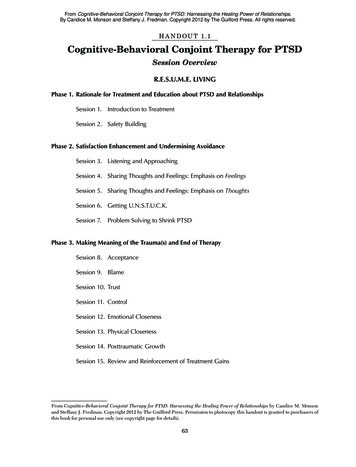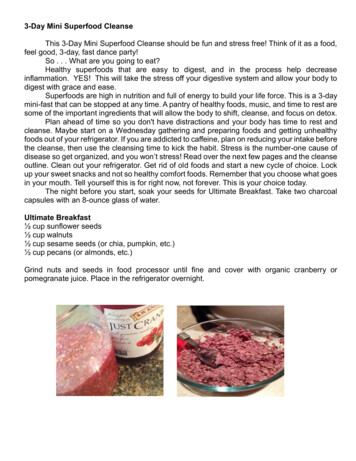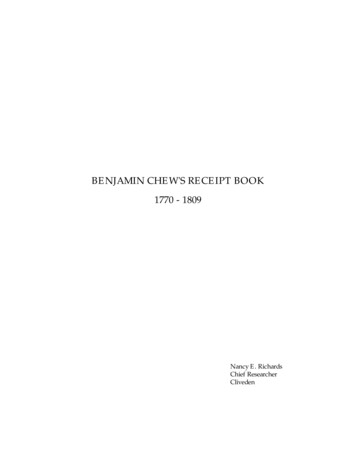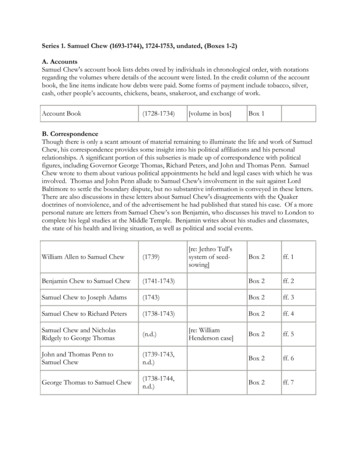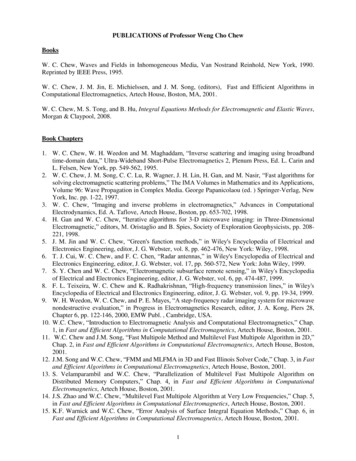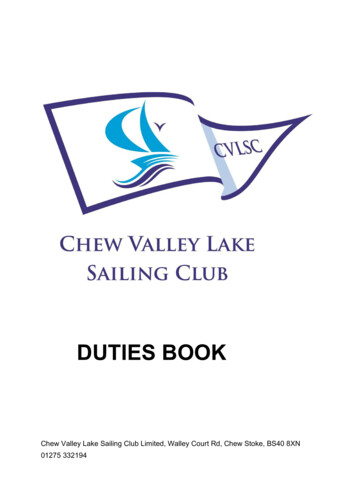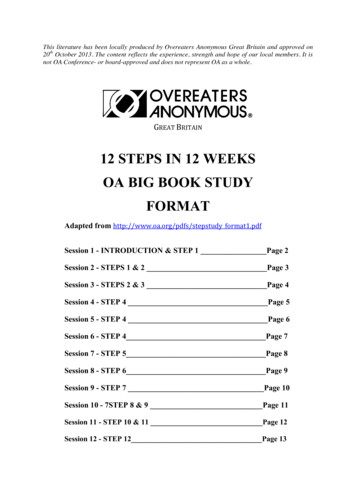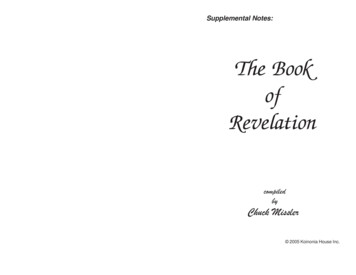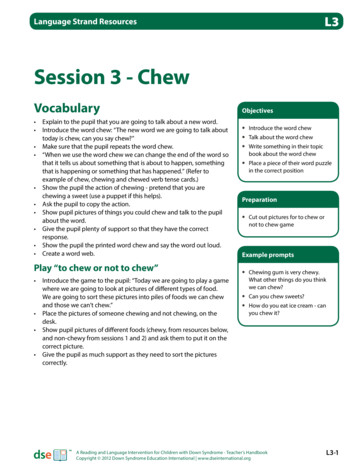
Transcription
L3Language Strand ResourcesSession 3 - ChewVocabulary Explain to the pupil that you are going to talk about a new word.Introduce the word chew: “The new word we are going to talk abouttoday is chew, can you say chew?”Make sure that the pupil repeats the word chew.“When we use the word chew we can change the end of the word sothat it tells us about something that is about to happen, somethingthat is happening or something that has happened.” (Refer toexample of chew, chewing and chewed verb tense cards.)Show the pupil the action of chewing - pretend that you arechewing a sweet (use a puppet if this helps).Ask the pupil to copy the action.Show pupil pictures of things you could chew and talk to the pupilabout the word.Give the pupil plenty of support so that they have the correctresponse.Show the pupil the printed word chew and say the word out loud.Create a word web.Play “to chew or not to chew” Introduce the game to the pupil: “Today we are going to play a gamewhere we are going to look at pictures of different types of food.We are going to sort these pictures into piles of foods we can chewand those we can’t chew.”Place the pictures of someone chewing and not chewing, on thedesk.Show pupil pictures of different foods (chewy, from resources below,and non-chewy from sessions 1 and 2) and ask them to put it on thecorrect picture.Give the pupil as much support as they need to sort the picturescorrectly.Objectives Introduce the word chew Place a piece of their word puzzlein the correct positionTalk about the word chewWrite something in their topicbook about the word chewPreparation Cut out pictures for to chew ornot to chew gameExample prompts Chewing gum is very chewy.What other things do you thinkwe can chew?Can you chew sweets?How do you eat ice cream - canyou chew it?A Reading and Language Intervention for Children with Down Syndrome - Teacher’s HandbookCopyright 2012 Down Syndrome Education International www.dseinternational.orgL3-1
L3Language Strand ResourcesExpressive language Explain that you are going to use their topic book, so that they cantell other people about what they have been talking about and sothat they can use their new words.Get out their topic book and encourage them to talk around thevocabulary you have been working on.Ask them to choose a picture to write about and stick in their book:“Which picture would you like to stick in your book today? Let’swrite something about the picture in our books. What would youlike to tell your mummy and daddy?”Use the flashcards to support this activity.When you have finished this activity get out the pupil’s word puzzleand ask them to find the chew puzzle piece (sweets) and place it inthe correct place on the puzzle board.“Let’s find the piece of your puzzle with a food that you could chewon it. Where do you think it should go?”Word web idea Write ‘chew’ in the middle of a word web.Ask the child to come up with words about ‘chew’ e.g. cereal, food,bite, teeth.You may need to support the child by asking e.g. ‘Do we chew soupor sweets?’Example prompts What foods did we look at todaythat we could chew?What does it look like when youchew something?Would you chew soup or cereal?AdaptationsTo increase difficulty: Include distractor items Develop more complex sentencese.g. using connecting words,plurals, tenses, sequencingAsk the pupil to name each itemand say how you eat itTo reduce difficulty: Reduce number of picturesModel sortingA Reading and Language Intervention for Children with Down Syndrome - Teacher’s HandbookCopyright 2012 Down Syndrome Education International www.dseinternational.orgL3-2
L3Language Strand ResourcesFlashcardchewDefinition cardchewTo bite and move yourteeth. To make foodeasier to eat.A Reading and Language Intervention for Children with Down Syndrome - Teacher’s HandbookCopyright 2012 Down Syndrome Education International www.dseinternational.orgL3-3
Language Strand ResourcesL3Chewing picturesA Reading and Language Intervention for Children with Down Syndrome - Teacher’s HandbookCopyright 2012 Down Syndrome Education International www.dseinternational.orgL3-4
Language Strand ResourcesL3Chewy food picturesA Reading and Language Intervention for Children with Down Syndrome - Teacher’s HandbookCopyright 2012 Down Syndrome Education International www.dseinternational.orgL3-5
L3Language Strand ResourcesChewing verb tense cardschewI am going to chew the.chewingI am chewing the.chewedI have chewed the.A Reading and Language Intervention for Children with Down Syndrome - Teacher’s HandbookCopyright 2012 Down Syndrome Education International www.dseinternational.orgL3-6
Language Strand ResourcesL3To chew or not to chewA Reading and Language Intervention for Children with Down Syndrome - Teacher’s HandbookCopyright 2012 Down Syndrome Education International www.dseinternational.orgL3-7
book about the word chew Place a piece of their word puzzle in the correct position Objectives Cut out pictures for to chew or not to chew game Preparation. eadin n Languag nterventio o hildre it ow yndrom - eacher’ andbook L3-2 Copyrigh 2
